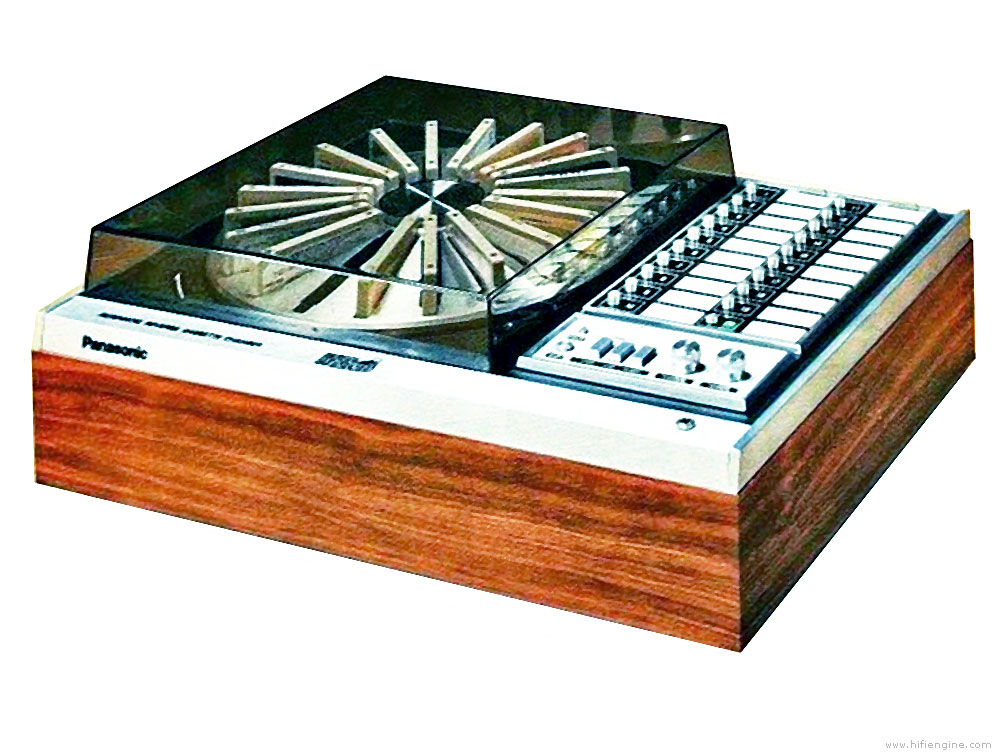As a new monthly feature of this blog, Audiogon will take a look at some of the technological marvels of the past that may have preceded your birth, escaped your memory, or come and gone without ever having made an impression. This month, we take a look at the Panasonic RS-296US.

Panasonic rolled out its 20-cassette carousel player in time for Christmas 1972 at a retail cost of US $179 (or the equivalent of US $1,100 today). It wasn’t the first multi-cassette player – Denon, Phillips, Pioneer and others had already manufactured players that loaded multiple cassettes along linear tracks – but most of these had been marketed primarily for commercial use – retail stores, supermarkets and the like.
Panasonic was taking a direct stab at the home market with the RS-296US, and a big stab at that: Not only was the 20-cassette capacity larger than anything previously offered, but at 40 pounds, it was one heavy piece of hi-fi equipment. It promised the ability to play continuous music for two-and-a-half days when programmed correctly – provided the cassettes you inserted were 90 minutes in length and you programmed the device to play through the entire carousel twice.

The RS-296US worked by pulling cassettes down into the machine where the actual cassette-playing apparatus was encased. Once the cassette was inside, the tape could be rewound or fast-forwarded manually, if so desired. At the end of the first side, the apparatus would play the cassette’s second side before ejecting the tape back to its place in the carousel. The carousel would then rotate to the next cassette it had been programmed to play, and the whole process would begin again.
Popular audio-tech vlogger Techmoan took a look at the RS-296US a few years back, and this YouTube video gives an outstanding look at how this behemoth worked its magic.
This was all quite a technological feat for the early 1970’s, but as one might imagine given the amount of circuitry involved under-cover, any tape snafus such as snagging or unspooling were further complicated by the RS-296US’s design. That and its prohibitive cost kept the RS-296US from becoming a big seller, and they came and went fairly quickly on the hi-fi market. Today, they can be found in varying conditions anywhere from Goodwill for a handful of bucks to online for its 2020 retail equivalent and higher.
